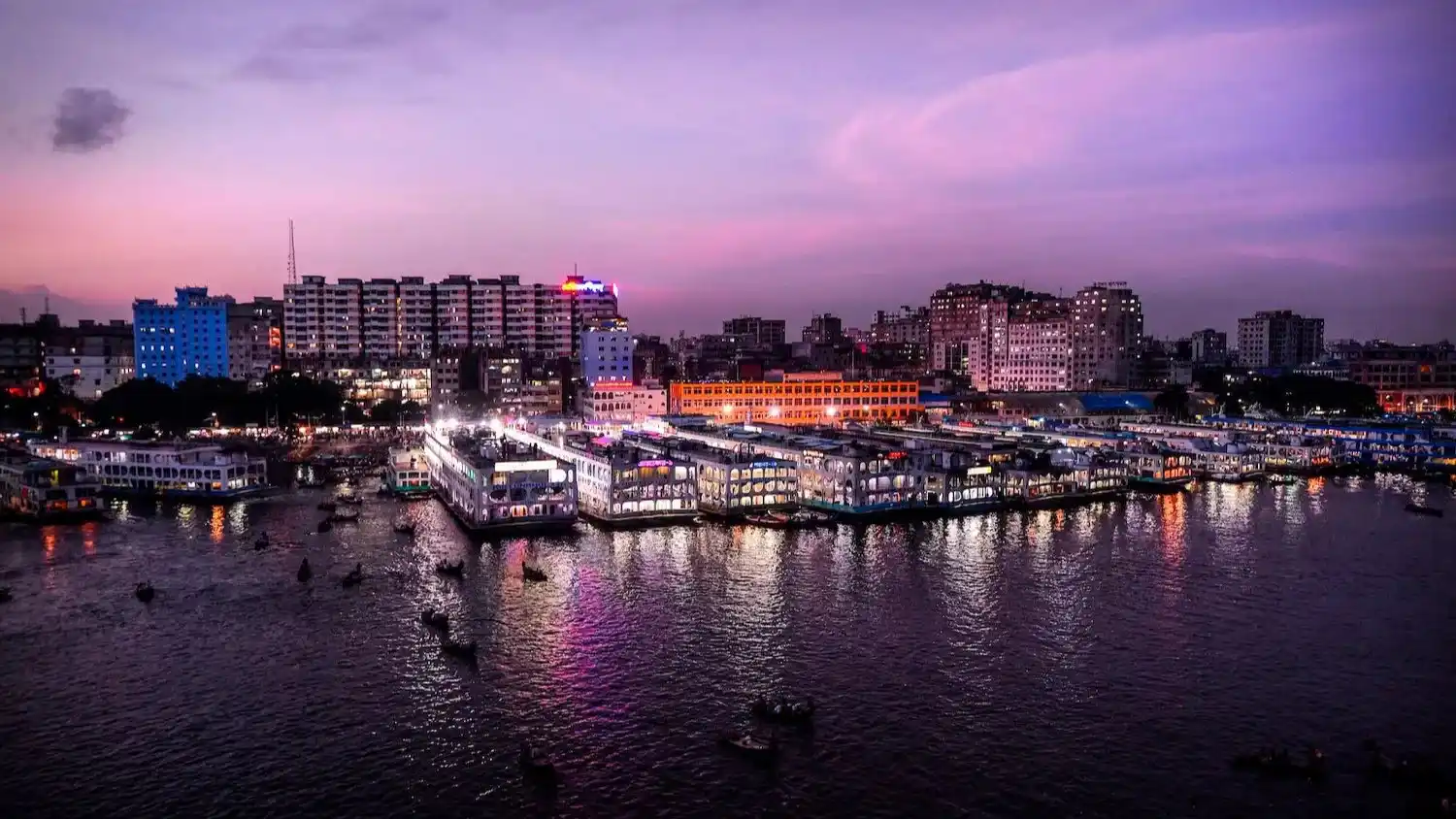GET IN TOUCH
- Please wait...

When it comes to emerging economies in Asia, Bangladesh is a country that often flies under the radar. However, recent economic indicators and trends suggest that this South Asian nation is poised for significant growth and has the potential to become one of the top economies in the region.
Bijon Islam, CEO of LightCastle, and Zahedul Amin, Director and Co-founder of LightCastle presented the booklet attached below at the Larive Business Forum 2023 highlighting the key factors driving Bangladesh’s economic growth and presenting a compelling case for investors and businesses to explore the opportunities it offers.
Bangladesh’s economic resilience has been remarkable, particularly in the face of global unrest and the COVID-19 pandemic. Despite the challenges, the country’s economy has shown strong vitals, positioning it as the 35th largest economy in 2022. Moreover, it is predicted that Bangladesh will climb to the 26th position by 2030.
With a total GDP of USD 460 billion, which is the second-highest in South Asia, and a GDP per capita of USD 2,734, Bangladesh’s economic potential is undeniable. The country’s GDP growth rate of 5.5% surpasses the South Asia average, indicating a robust and expanding economy.
One of the driving forces behind Bangladesh’s economic growth is its growing labor force. With a median age of 28 years and 62% of the population under the age of 35, the country boasts a young and dynamic workforce. The labor force currently stands at 74.5 million, and the labor force participation rate is an impressive 61%. Bangladesh also recognizes the importance of female participation in the workforce and encourages gender inclusivity, with a female labor force participation rate of 42.7%, which is higher than neighboring countries such as India and Pakistan.

Several factors contribute to Bangladesh’s promising prospects for the future. The country’s annual MAC (Mobile, Accessible, and Consumable) population growth rate is a staggering 10.5%.
Additionally, Bangladesh has managed its debt well, with a total debt-to-GDP ratio of 38% in 2021. Furthermore, the vision of achieving a trillion-dollar economy by 2040 showcases the government’s commitment to sustained growth and development.

Foreign direct investment (FDI) has been pouring into Bangladesh, driven by the country’s favorable business environment and the government’s efforts to attract investments. Major investments in manufacturing, energy, and trade services have bolstered FDI inflows.
The government has taken significant steps to increase FDI across different sectors of the economy, leading to an investment proposal of 230+ projects under the Bangladesh Investment Development Authority (BIDA) in the first quarter of 2023. The foreign currency reserve of USD 31 billion as of March 2023 indicates the country’s stability and attractive investment climate.

Bangladesh maintains strong diplomatic and trade relations with global economic powers, emphasizing its commitment to “Friendship Towards All, Malice Towards None.”
The country has effectively managed its relationships with both India and China, despite the complex nature of the geopolitical realities in the region. Additionally, Bangladesh’s strong trade relations with the four countries of the Quadrilateral Security Dialogue further enhance its global standing. The stability and political environment over the last decade have created a favorable atmosphere for businesses and investors.

Export-oriented industries play a crucial role in Bangladesh’s economic growth. Major infrastructural developments and the establishment of Special Economic Zones and Export Processing Zones have significantly increased connectivity and ease of doing business in the country.
With 66 Special Economic Zones, including 55 government-owned and 11 privately owned, and 3 operational Hi-Tech Parks with 39 under construction, Bangladesh is creating a conducive environment for businesses to thrive.
The Ready-Made Garments (RMG) sector is a standout, accounting for around 82% of the country’s export volume in 2023. Bangladesh’s robust export growth has seen it ship products to 181 countries worldwide.

The Netherlands actively contributes to Bangladesh’s economy. Dutch investors have been at the forefront of the country’s investment scene, with 21% of foreign direct investment coming from the Netherlands in 2018-19.
Additionally, Bangladesh has a Double Taxation Avoidance Agreement (DTAA) with the Netherlands, further facilitating bilateral trade. The Dutch have also made significant investments in Bangladeshi private companies and ventures, diversifying their involvement in the country’s economic growth.

Bangladesh has taken several steps to improve the ease of doing business, with the Bangladesh Investment Development Authority (BIDA) leading the charge. BIDA’s One-Stop Service, infrastructure investments, and the development of Economic and Export Processing Zones have created a business-friendly environment. The Economic Zones offer residency visas and citizenship opportunities for foreign investors, further incentivizing investments.

The Dutch possess managerial expertise, technical expertise, knowledge management, and scientific and technological efficiency, while Bangladesh offers a strong macroeconomic outlook, inclusive growth, a strategic geographic location, a large and young population, and rapid digitization.
The key sectors to invest in Bangladesh span agriculture, jute and floriculture, water, health and pharmaceuticals, financial services, handicrafts, shipbuilding, RMG, livestock and fisheries, leather, the blue economy, IT & ITES, power and energy, and the circular economy.
Bangladesh’s transformation from the best-kept secret in Asia to a prominent player in the global economy is well underway. With its strong economic growth drivers, resilient performance during challenging times, increasing FDI inflows, and favorable business environment, Bangladesh is poised for substantial growth and development.
The Larive Business Forum Booklet serves as a valuable resource for understanding the country’s potential and unlocking the numerous opportunities it offers and providing a quick overview of setting up a business entity in Bangladesh, establishing subsidiaries, joint ventures, and liaisons, as well as navigating global capital toward the country.
Our experts can help you solve your unique challenges
Stay up-to-date with our Thought Leadership and Insights